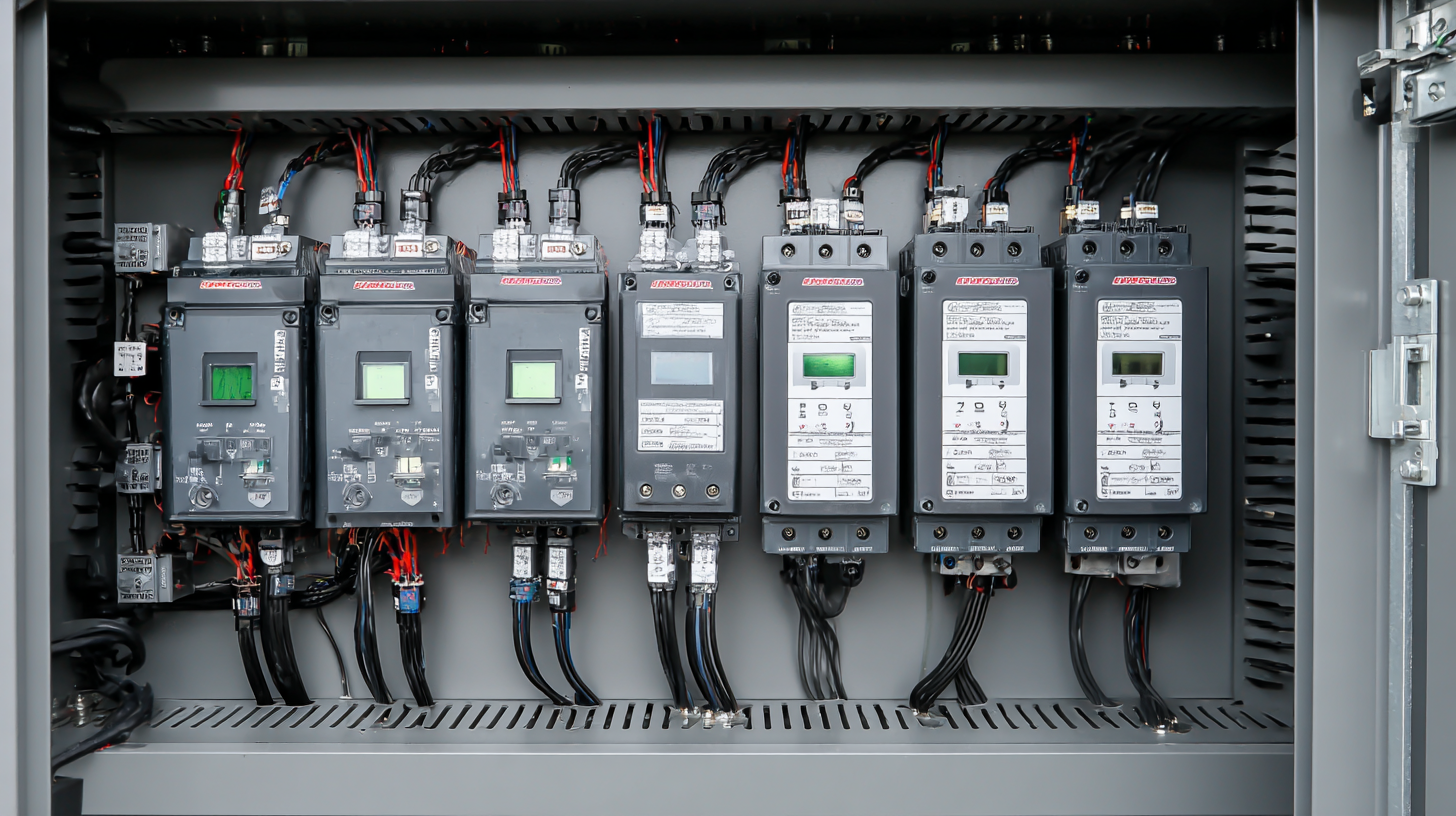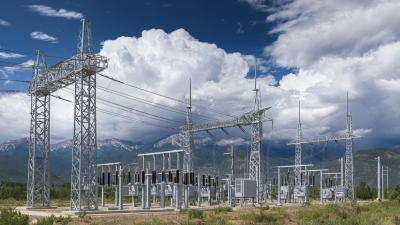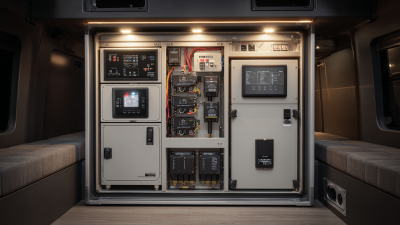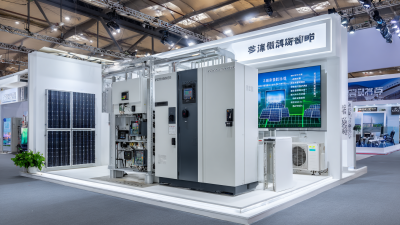
-
Home
-
About Us
-
Products
-
Total Solution
-
News
-
Blog
-
Contact Us
Leave Your Message
-
-
Phone
-
E-mail
-
Whatsapp
-
Whatsapp



In the quest for energy efficiency and reliability, selecting the right power inverter is critical for both residential and commercial applications. This comprehensive guide will help you navigate through the complexities of choosing the ideal model by focusing on "Inverter Pure Sinus" technology. Known for its ability to deliver a stable and high-quality sine wave output, Inverter Pure Sinus systems are designed to power sensitive electronic devices without the risk of damage or performance interruption. Understanding the features, benefits, and various models of Inverter Pure Sinus will empower you to make informed decisions that maximize efficiency and ensure uninterrupted energy supply. Whether you are powering home appliances, renewable energy systems, or essential medical equipment, this guide will provide valuable insights to help you select the best inverter that meets your unique needs and enhances your energy management strategy.

Inverter pure sinus technology is a sophisticated power management system designed to deliver a clean and stable sine wave output, which is crucial for sensitive electronic devices. Unlike conventional inverters that produce a modified sine wave, pure sine wave inverters mimic the natural waveform of electricity, ensuring compatibility with a wide range of appliances. This technology is particularly beneficial for high-end devices such as medical equipment, audio systems, and appliances with microprocessors that require stable power supply to function effectively.
One of the key advantages of inverter pure sinus technology lies in its efficiency. Pure sine wave inverters minimize harmonic distortion and reduce electrical noise, which enhances the performance and longevity of connected devices. Additionally, they operate quietly and reduce the risk of overheating, making them suitable for both indoor and outdoor use. Understanding these fundamental concepts is essential when choosing the right model, as it enables users to select an inverter that not only meets their power needs but also ensures optimal functionality and reliability for a variety of applications.
Choosing the right inverter is essential for maximizing efficiency and ensuring that your power needs are met. The first step in this process is to accurately assess your power requirements. Begin by listing all the devices and appliances you intend to run, along with their respective wattage. This information can usually be found on the device's specifications label or in the user manual. Once you have a comprehensive list, calculate the total wattage by adding together the wattage of each device. It's important to also consider starting wattage, as some appliances, especially those with motors, may require more power to start up.
After determining your total wattage needs, consider how often you will use these devices simultaneously. This will help you establish a working model for your inverter size. A rule of thumb is to select an inverter that can handle at least 20% more than your calculated wattage to account for any surge in power demand. Additionally, think about future needs; if you plan to expand your power usage, selecting a slightly larger inverter can save you from needing to upgrade later. By carefully analyzing your power requirements and anticipated usage, you can confidently choose an inverter that meets your needs while optimizing efficiency.
When selecting the right inverter pure sinus model, it’s essential to focus on key features that impact efficiency and overall performance. According to industry reports from the International Energy Agency (IEA), the efficiency of pure sine wave inverters can reach up to 95%, making them ideal for sensitive electronics. Look for models with high conversion efficiency and low total harmonic distortion (THD), ideally below 3%. This ensures a stable power output and protects your equipment from potential damage.
Another critical aspect is the inverter's capacity. The right model should match your power requirements precisely. In their 2022 market analysis, Frost & Sullivan highlighted that appliances requiring clean power, such as medical devices and high-end audio setups, benefit significantly from using inverters with at least 1000 watts capacity. Moreover, features like built-in surge protection and thermal management systems can prolong the lifespan of your inverter and enhance its reliability.
**Tips:** Always check the inverter's input voltage and output waveform specifications to ensure compatibility with your devices. Additionally, consider models with user-friendly interfaces and monitoring capabilities for easy usage and maintenance. Prioritizing these features will ensure you make an informed choice that maximizes efficiency and longevity.

When selecting an inverter pure sinusoidal wave generator, understanding what sets the top brands apart is crucial for maximizing efficiency and performance. Leading brands like SMA Solar Technology and Victron Energy have consistently been recognized for their superior build quality and innovative features. According to a report from the International Renewable Energy Agency (IRENA), models from these manufacturers show a 10-20% increase in energy conversion efficiency compared to lower-tier options, significantly impacting overall operational costs over time.
One key differentiator among brands is the inclusion of advanced monitoring systems. For instance, SMA’s Sunny Portal enables real-time data tracking, allowing users to optimize energy usage based on their specific needs. Similarly, Victron Energy provides an intuitive app interface that facilitates smooth management of power consumption. Reports indicate that users leveraging these technologies can reduce unnecessary energy losses by up to 15%.
**Tip:** When choosing an inverter, consider models with diagnostic capabilities. This feature not only aids in troubleshooting but can also lead to proactive maintenance, extending the lifespan of your unit.
**Tip:** Look for inverters with adaptive load handling. Brands that incorporate smart technology can adjust output based on demand, resulting in better performance and reduced electricity bills.

The efficiency of an inverter pure sinus system can be significantly enhanced through proper installation and maintenance. According to a recent report by the International Energy Agency (IEA), optimizing inverter systems can lead to energy savings of up to 30% in residential applications. This highlights the importance of adhering to best practices during installation to maximize energy output and overall system performance.
Tip 1: Ensure proper sizing of your inverter to match your energy consumption needs. Undersizing may lead to inefficiencies and overloading, while oversized units can result in wasted resources. A detailed assessment of your power requirements based on the appliances you plan to operate is crucial.
Tip 2: Regular maintenance checks are essential for sustaining peak performance. The Solar Energy Industries Association (SEIA) recommends quarterly inspections of inverter systems, which can help identify potential issues early and prevent costly repairs. Dust and debris can accumulate, affecting cooling and efficiency, so keeping the unit clean and well-ventilated is vital for long-term functionality.
By following these tips, users can ensure that their inverter pure sinus systems operate at the highest efficiency, contributing to both cost savings and environmental sustainability.





